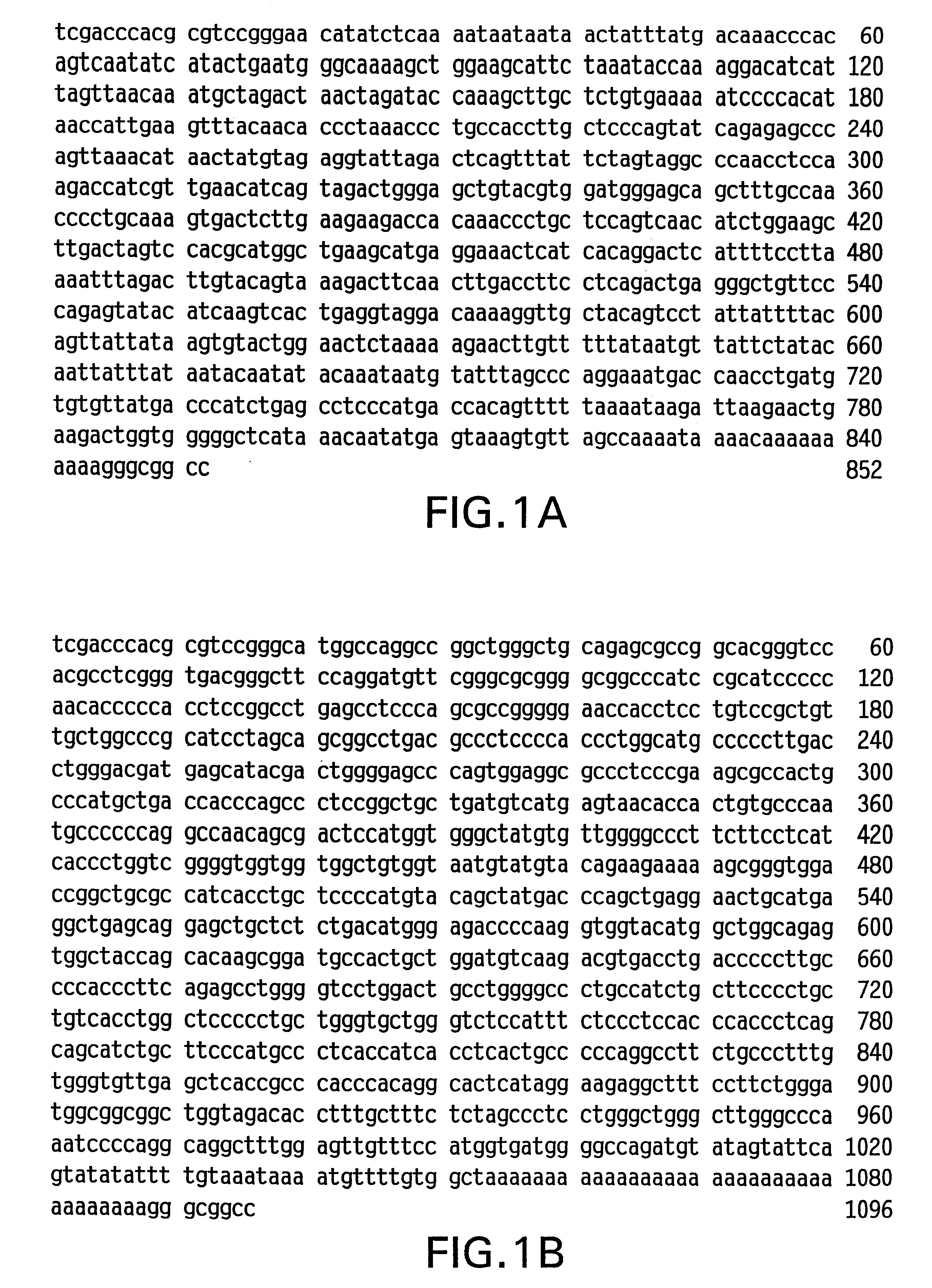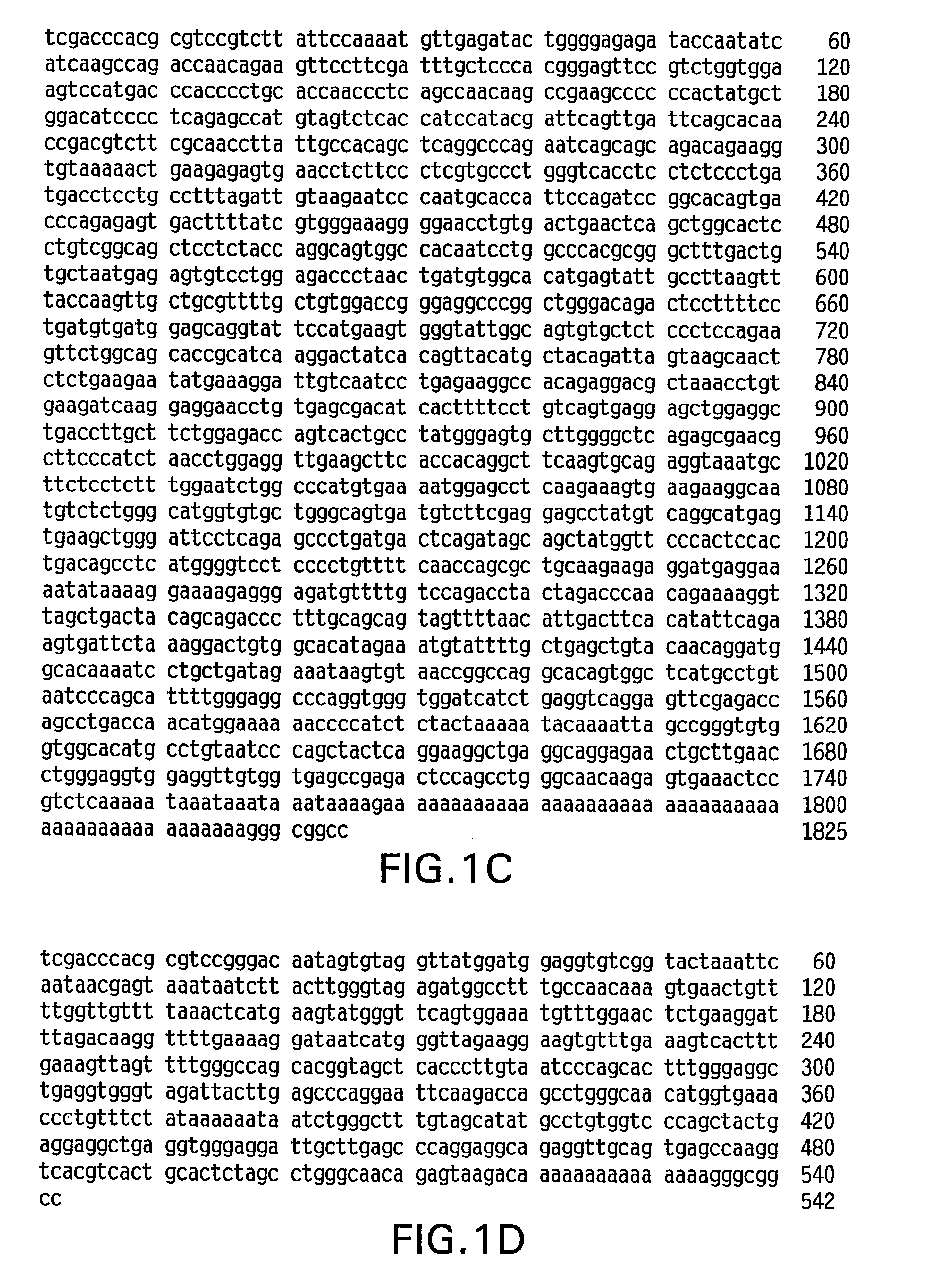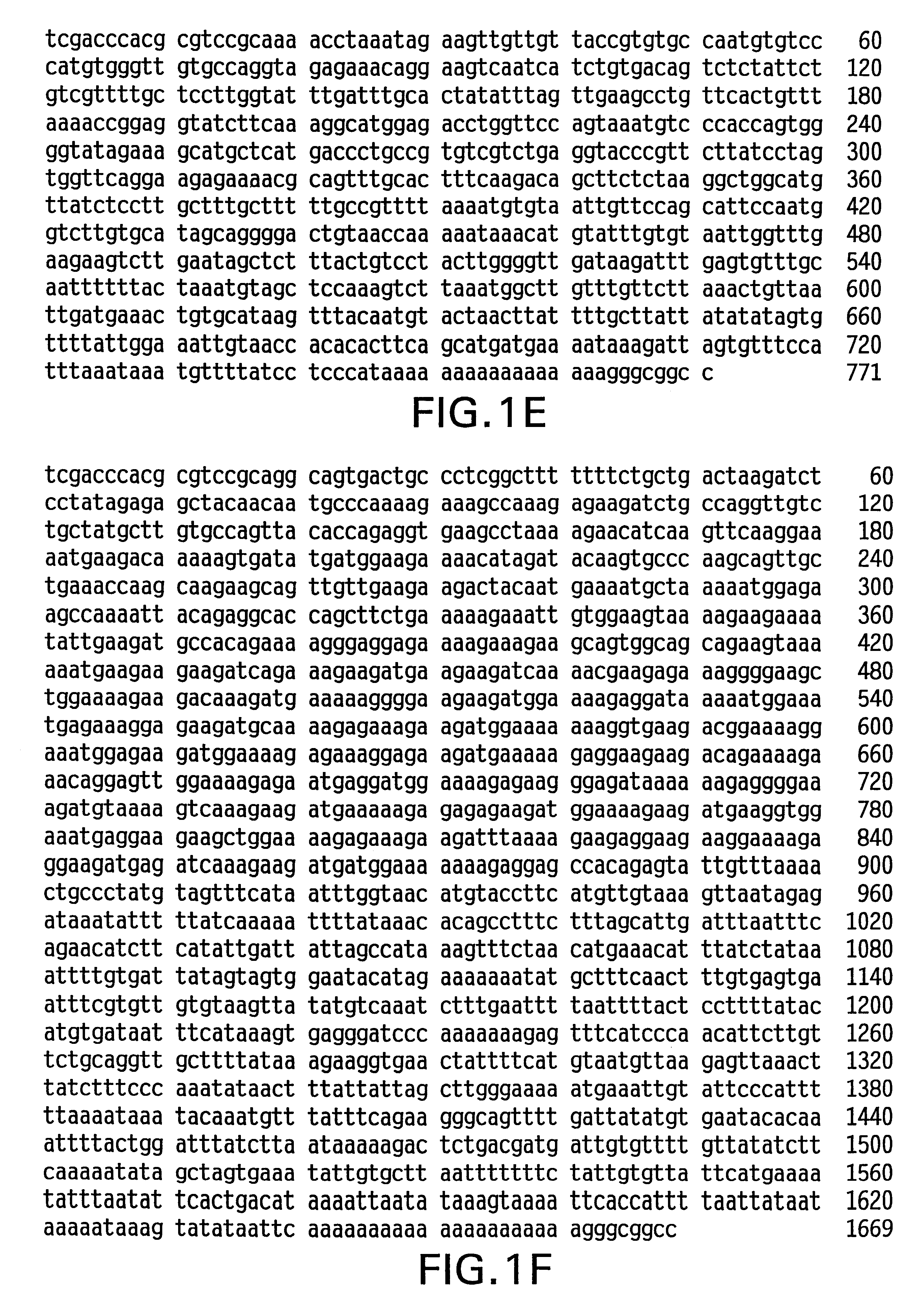Compositions and methods for diagnosing and treating conditions, disorders, or diseases involving cell death
a cell death and composition technology, applied in the field of compositions and methods for diagnosing and treating conditions, disorders, or diseases involving cell death, can solve the problems of inducing irreversible cell death, difficult to determine with any degree of certainty if a nerve cell death is a nerve cell death, and several types of mammalian cells, most notably neurons and cardiac muscle cells, have limited if any capacity to regenerate, etc., to prevent cell death, prolong the life, and prevent the cell death
- Summary
- Abstract
- Description
- Claims
- Application Information
AI Technical Summary
Benefits of technology
Problems solved by technology
Method used
Image
Examples
Embodiment Construction
5.1 The Protective Sequences
5.2 Protein Products of the Protective Sequences
5.3 Antibodies to the Protective Sequence Products
5.4 Uses of the Protective Sequences, Protective Sequence Products and Antibodies
5.4.1 Composition and Methods for the Treatment of Conditions, Disorders, or Diseases Involving Cell Death
5.4.1.1 Examples of Conditions, Disorders, or Diseases Involving Cell Death
5.4.1.2 Modulatory Antisense, Ribozyme and Triple Helix Approaches
5.4.1.3 Gene Replacement Therapy
5.4.1.4 Detection of Protective Nucleic Acid Molecules
5.4.1.5 Detection of Protective Sequence Products
5.4.2 Screening Assays for Compounds which Interact with Protective Sequence Products or Modulate Protective Sequence Activity
5.4.2.1 In Vitro Screening Assays for Compounds which Bind to Protective Sequence Products
5.4.2.2 Assays for Proteins which Interact with Protective Sequence Products
5.4.2.3 Assays for Compounds which Interfere with or Potentiate Protective Sequence Products Macromolecule Interacti...
PUM
| Property | Measurement | Unit |
|---|---|---|
| Fraction | aaaaa | aaaaa |
| Length | aaaaa | aaaaa |
| Composition | aaaaa | aaaaa |
Abstract
Description
Claims
Application Information
 Login to View More
Login to View More - R&D
- Intellectual Property
- Life Sciences
- Materials
- Tech Scout
- Unparalleled Data Quality
- Higher Quality Content
- 60% Fewer Hallucinations
Browse by: Latest US Patents, China's latest patents, Technical Efficacy Thesaurus, Application Domain, Technology Topic, Popular Technical Reports.
© 2025 PatSnap. All rights reserved.Legal|Privacy policy|Modern Slavery Act Transparency Statement|Sitemap|About US| Contact US: help@patsnap.com



